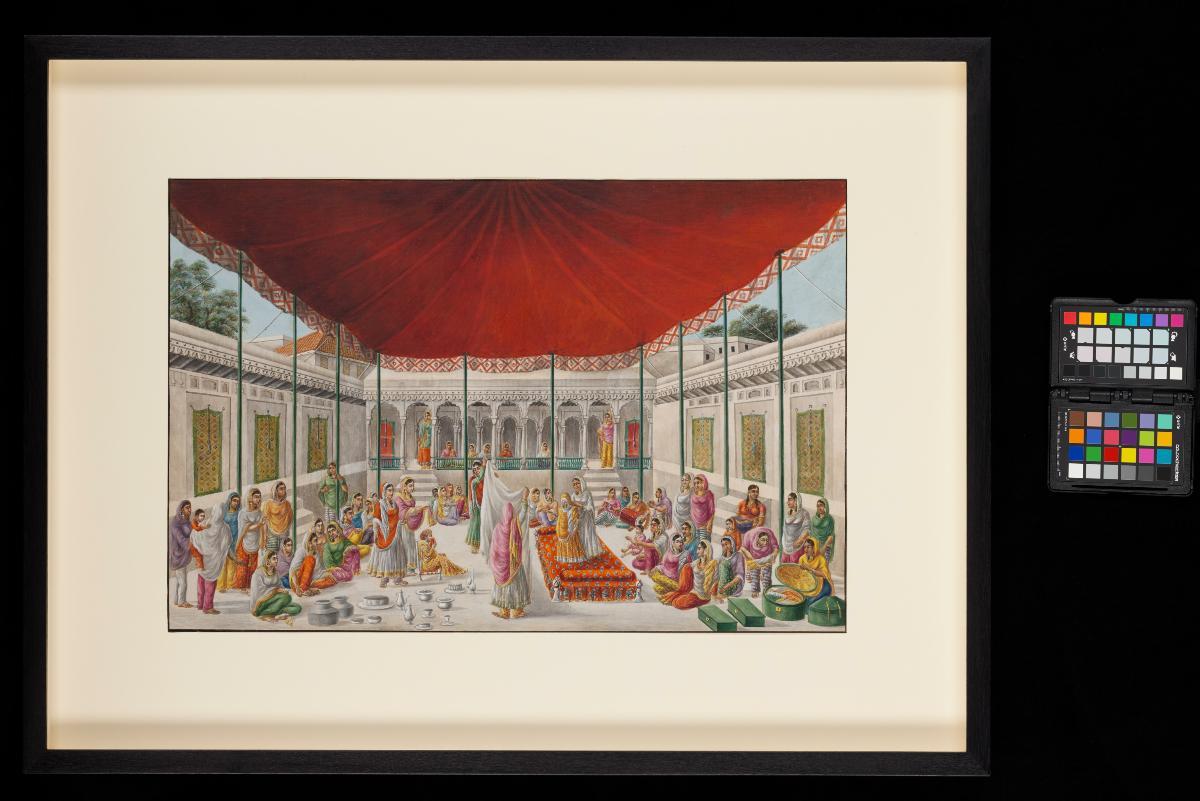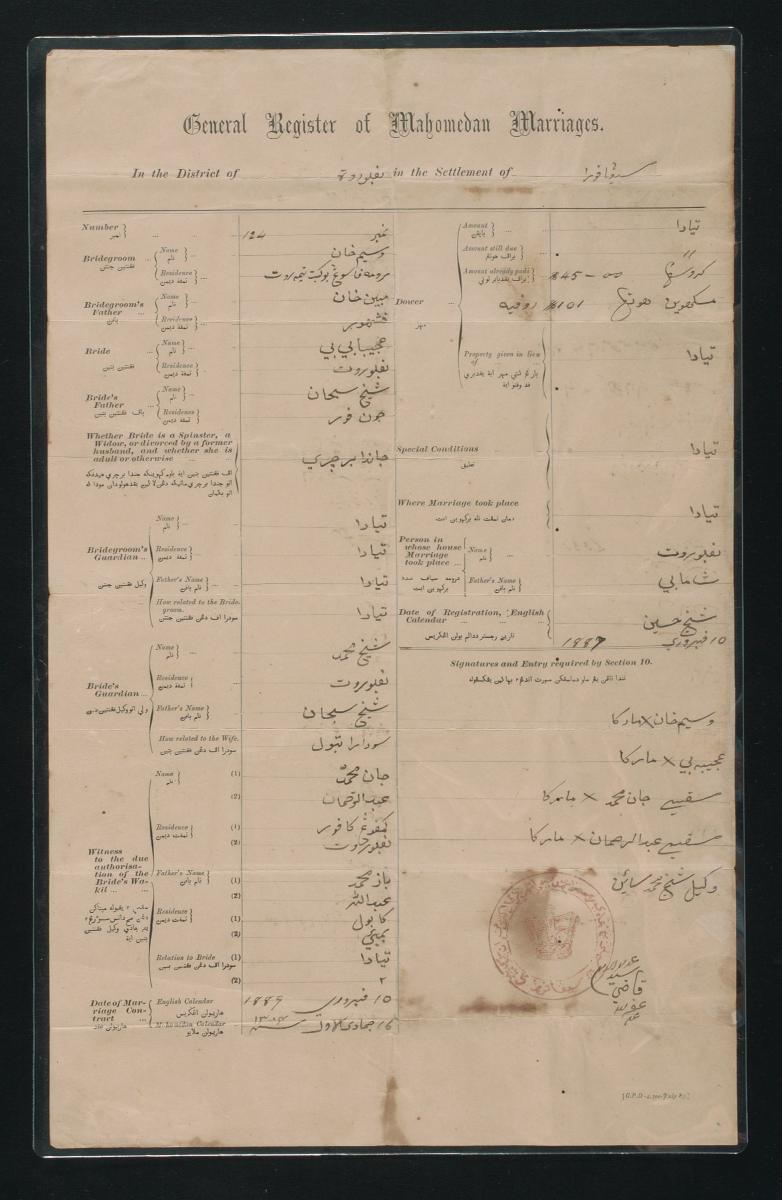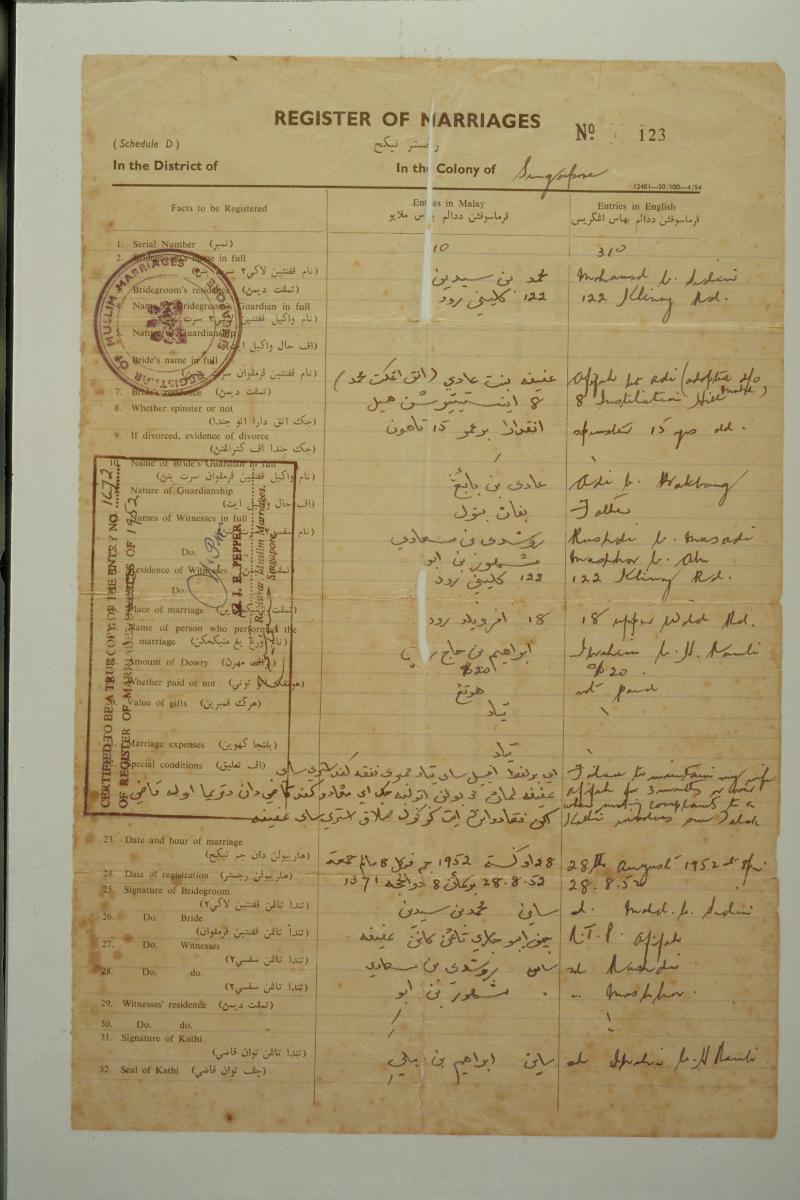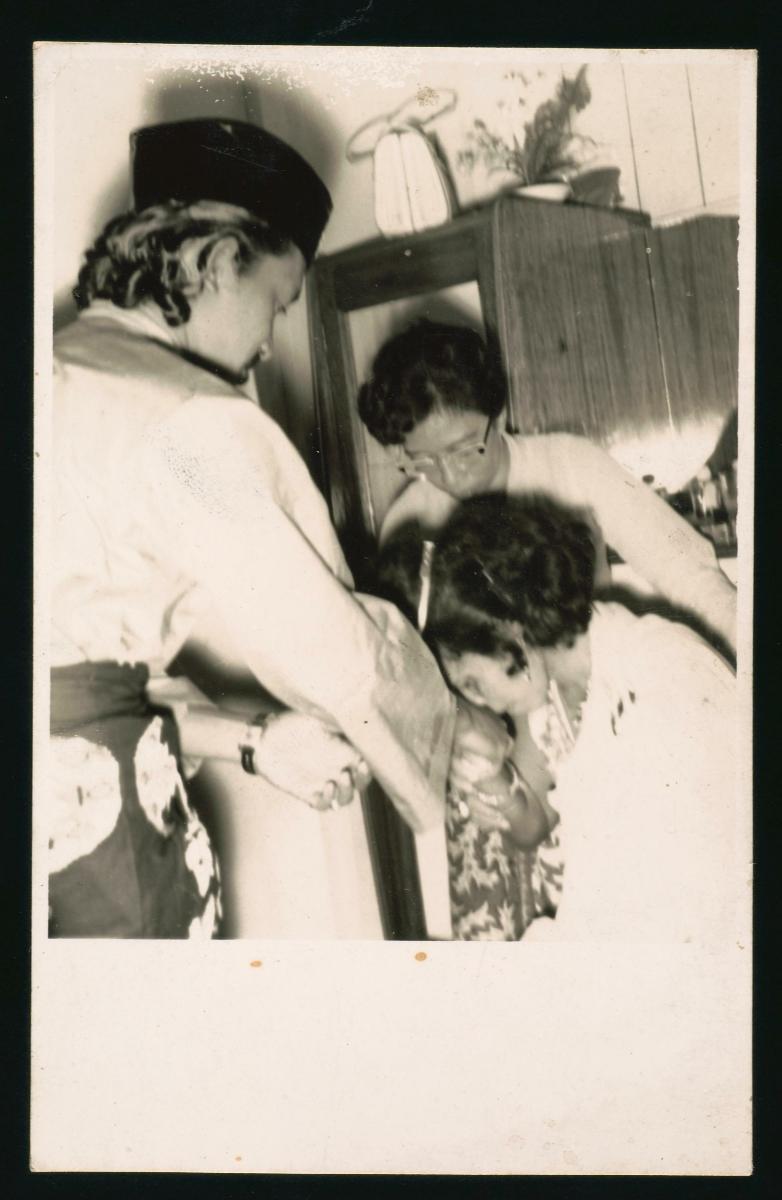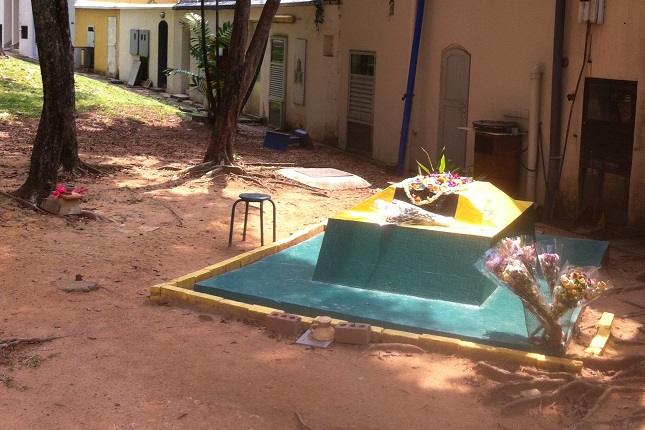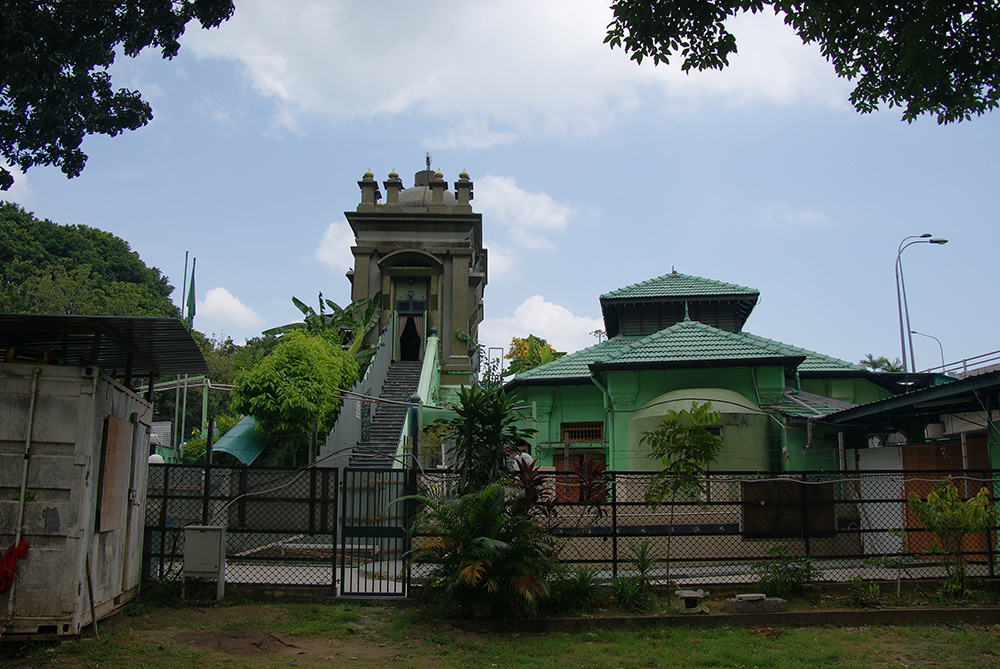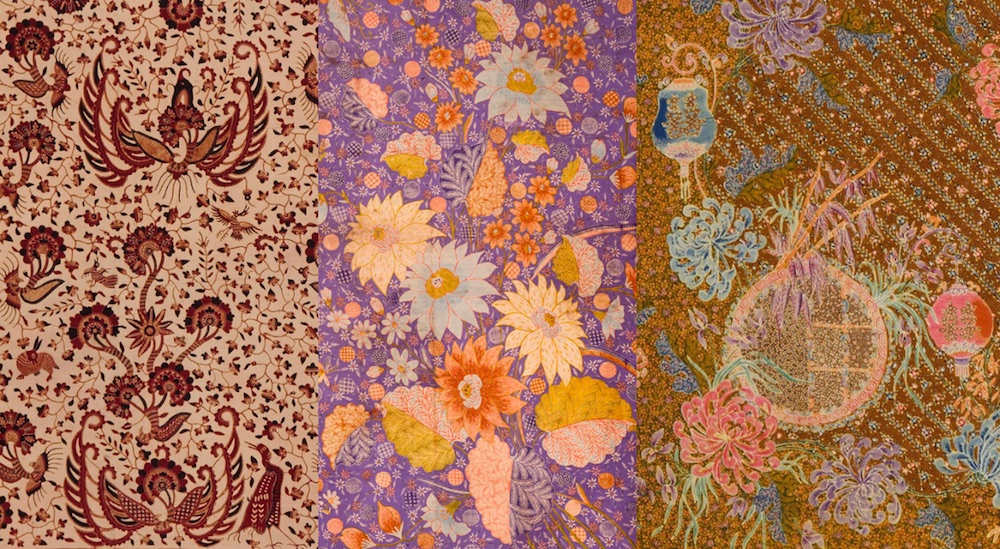This painting comes under the broad category known as “Company paintings” – referring to a variety of Indo-European styles that were so called because many of their patrons worked for the European East India Companies. The primary motivation of these patrons for collecting such paintings was purportedly documentary hence Company paintings generally depict scenes of daily life, occupations, festivals, architecture, local flora and fauna. This painting belongs to the Patna school, considered to be one of the most prolific centres as Patna rose in prominence and prosperity under British administration, prompting artists to move from Murshidabad. This painting appears to reflect the style of Sewak Ram, one of the more renowned painter who had migrated to Patna from Murshidabad in 1790.There is no evidence however to suggest that Sewak Ram was indeed the artist of this piece.This vibrant painting offers a glimpse into the myriad rituals that constitute traditional Muslim wedding customs in India. Although only the nikah (solemnisation ceremony) and a feast (walima) are required to conduct a wedding according to Islamic orthodoxy, additional local traditions may be incorporated. The scene most likely corresponds to the sharbat pilai ceremony that takes place immediately after the nikah ceremony, where the bridegroom is taken into the bride’s house among the company of womenfolk from the couple’s families, to drink the sharbat, a sweet syrup.




